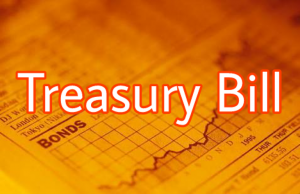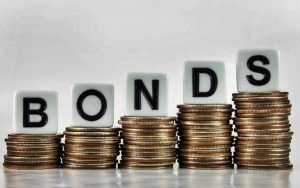The renaissance of the bond side of the market, the Ghana Fixed Income Market (GFIM) – which picked up steam in 2020 – has continued with volume and value traded from January to November; recording a 102 percent and 105 percent jump respectively over the comparable period last year, data from the GSE has shown.
According to the data, the cumulative volume of trades for the period stood at 192.3 billion, with a value of GH¢199.2billion – with the month of November alone accounting for 19.7 billion in trades. This stellar performance has been amid high investor interest seen in trading activities across the various maturities on the market.
The data from the Ghana Stock Exchange, which summarized market activities in November 2021, has shown a cumulative impressive performance since the start of 2021. For context, the November 2020 volume of 10.27 million was 72.07 percent higher than the equivalent in 2019, and the January to November volume of 95 billion represented a 71.11 percent increase over the entire volume traded for 2019.
In the latest publication of the Absa Africa Financial Market Index 2021, Ghana ranked 4th out of the 23 ranked financial markets on the continent; an indication that the Ghanaian market is geared to grow and develop amid the competition from other markets in the sub-region.
The index assesses countries based on six pillars: market depth; access to foreign exchange; market transparency, tax and regulatory environment; capacity of local investors; macroeconomic opportunity; and enforceability of financial contracts.
Government bonds dominate
Corporate bonds, however, continue to trail government-issued securities; particularly in relation to volumes traded. A perusal of volumes traded shows corporate bonds – 4.13 billion (0.22%); GoG notes and bonds – 164.15 billion (85%); GoG bills – 6.78 billion (3.53%); Cocoa bills – 17.01 billion (8.84%); BoG bills – 200 million (0.11%); Absa – 36.6 million (0.02%).
Chief Executive Officer and Financial Lead at Crescendo Consult, Doris Ahiati, believes that the trajectory of GFIM is reflective of investors seeking safety in the fixed income securities and demonstrating their desire to hedge.
According to her, investors are still cautious about the equities side of the market and this was reflected in a handful of stocks as opposed to many, driving the market’s rally. “The trend is fairly normal, as we are seeing a consistent year-on-year growth pattern. Investors are looking for some degree of predictability, so ideally we should have seen more activity on the fixed income counters; but we are mindful that this has been the first full year of recovery from the pandemic, and it was even dotted with lingering issues,” she explained.
Ms. Ahiati suggested that she expects the trend to continue in the coming months as concerns remain over the rate of recovery. Addressing concerns about the margin of corporate bonds relative to government-issued securities and the possible impact on access to finance, she said investors are savvy enough to balance their desire for safety with a demonstrable opportunity for growth.
Charging businesses who participate on the market to put their books in order to attract capital, she said: “If your books are compelling, no lender will deny you what is due you. Their value proposition should be compelling, and they should ensure governance measures are in place and working. That makes it easier for lenders and investors to extend funds”.
2022 in focus
Finance Minister Ken Ofori-Atta, on the other hand, in the 2022 budget highlighted that development and growth of the corporate bond market will be the key focus of the GFIM in 2022 – among several other initiatives which are intended to be undertaken to boost the development of the corporate bonds market.
To deepen liquidity of the market, 2022 has been slated as the year to launch securities lending and borrowing under the Global Master Securities Lending Agreements.
Notwithstanding the impressive performance of the fixed income market so far this year, the private sector has had to endure the crowding-out effect – resulting in slower growth in credit to the private sector due to the heightened risk-aversion of investors, especially banks.
The crowding-out effect is both the result of too much borrowing by government and the unwillingness of commercial banks to lend to the private sector.
It appears as though even if government slows down its borrowing or even lowers the yield on Treasury securities – as can be seen on the market – commercial banks are less likely to aggressively push up their loan books; as the banks are currently cautious and concerned about the elevated credit risk due to the pandemic.




